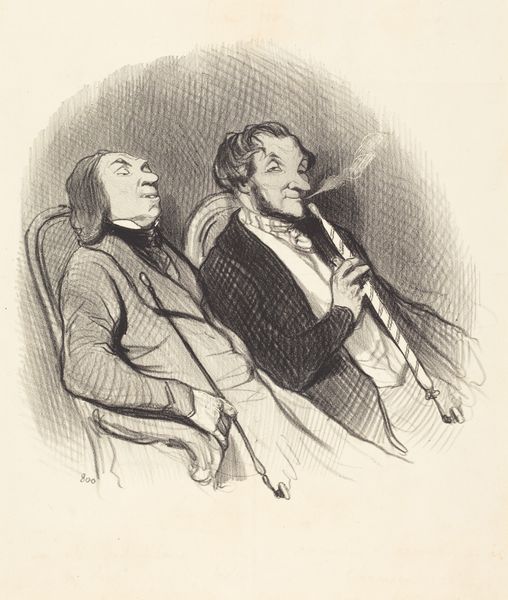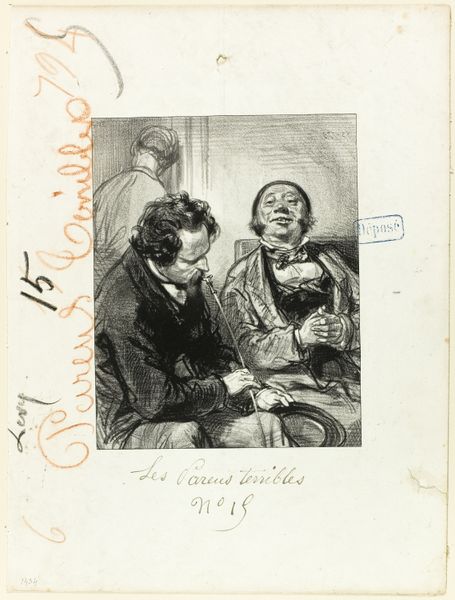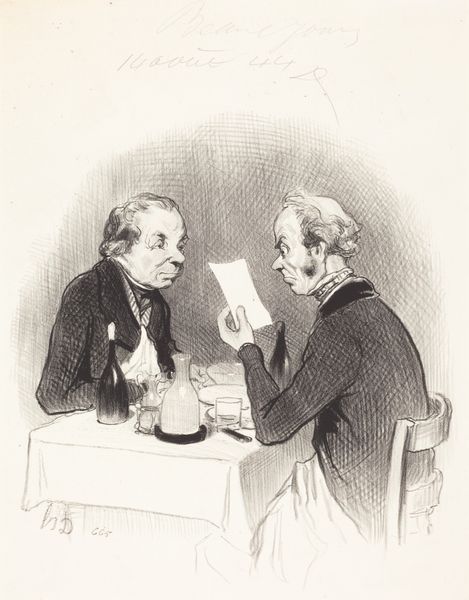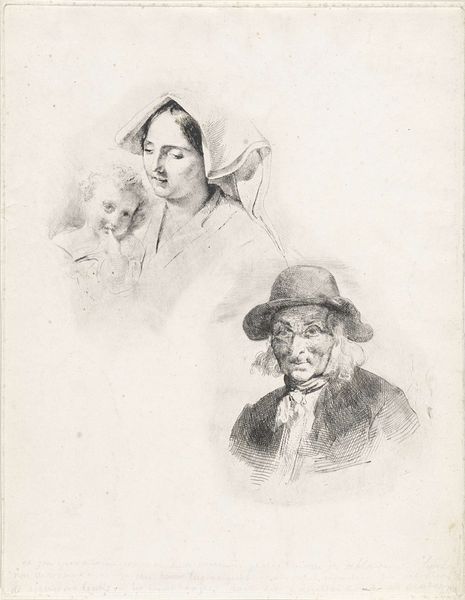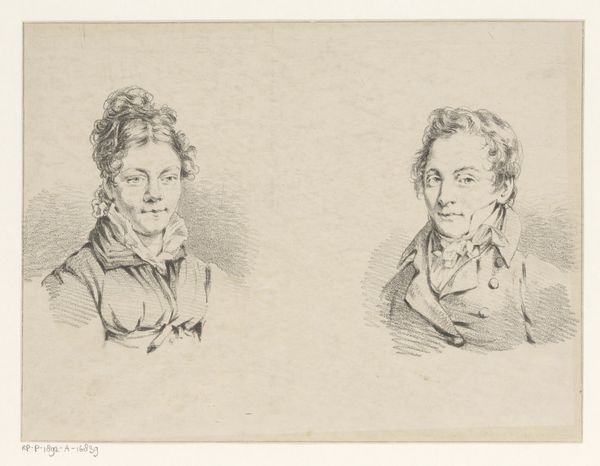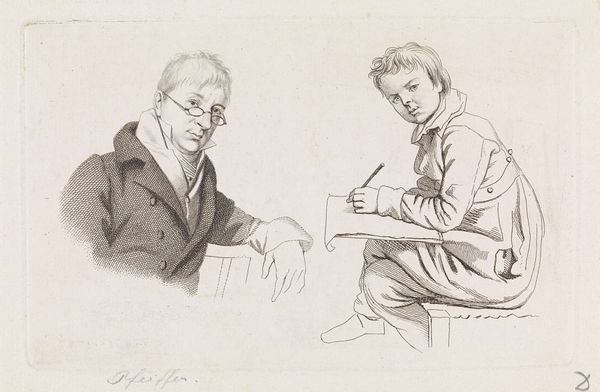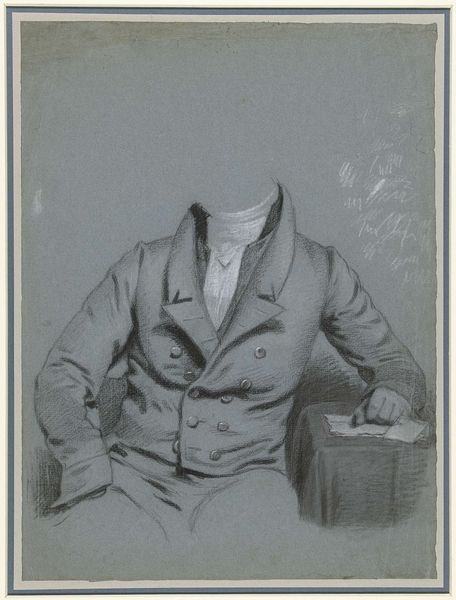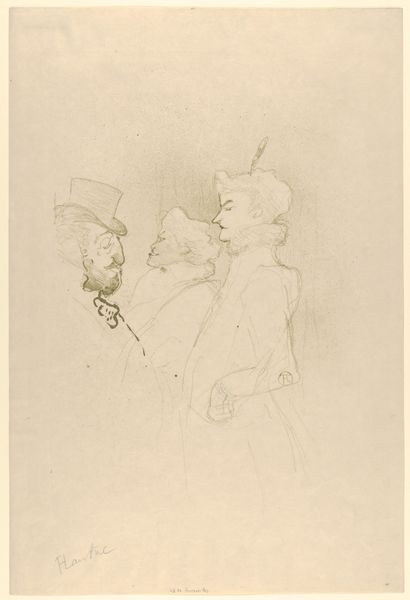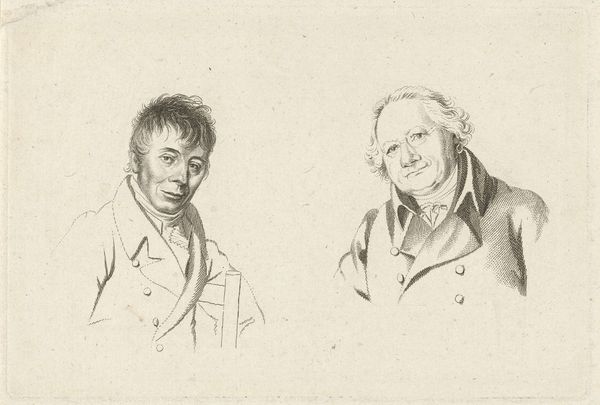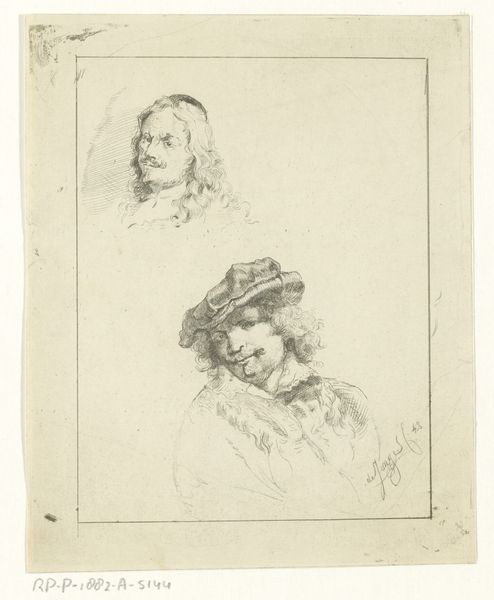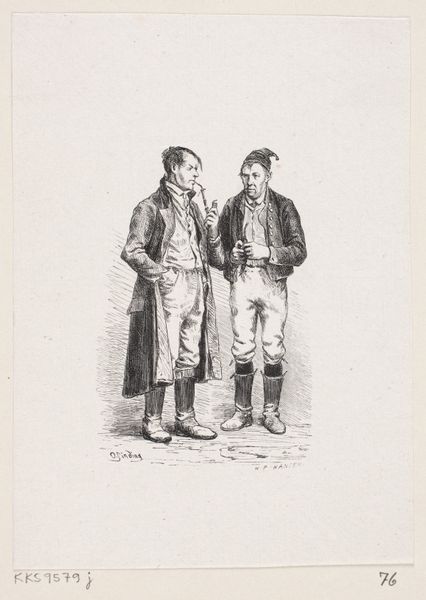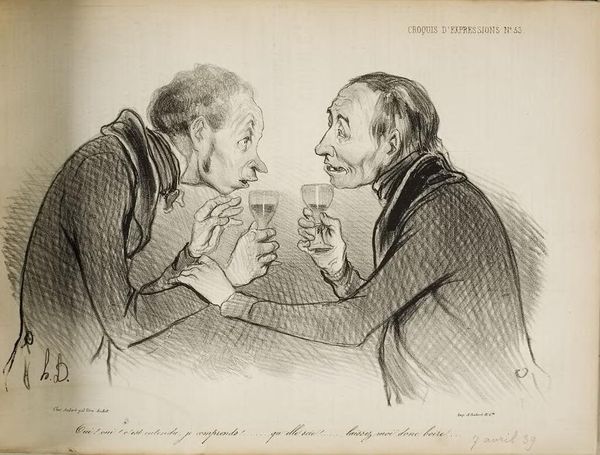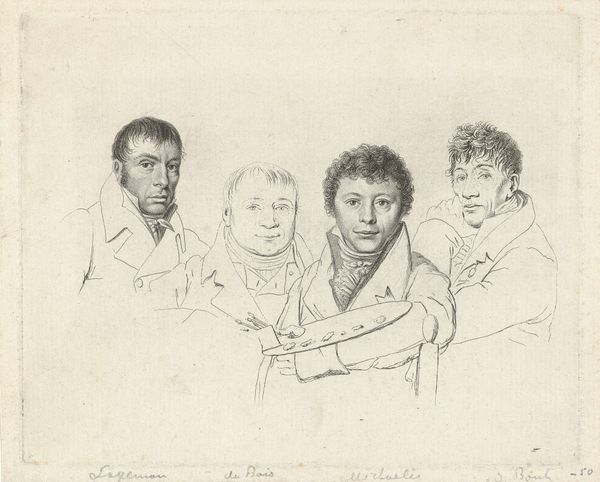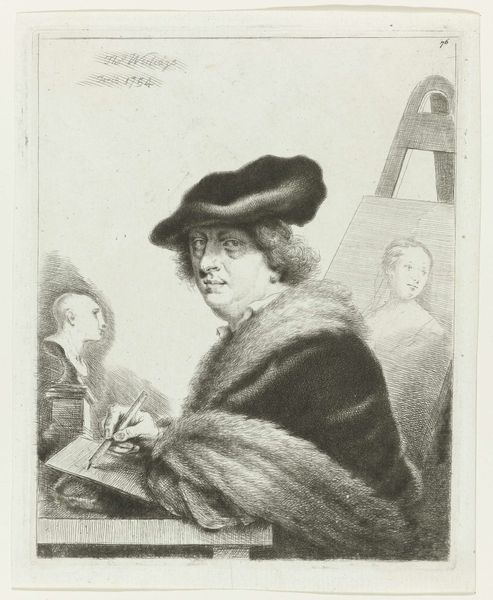
Portret van Christiaen Andriessen die een portret van Izaak Riewert Schmidt schildert c. 1780 - 1829
0:00
0:00
drawing, pencil
#
portrait
#
drawing
#
caricature
#
romanticism
#
pencil
Dimensions: height 152 mm, width 123 mm
Copyright: Rijks Museum: Open Domain
Curator: This intriguing drawing by Hendrik Willem Caspari, created sometime between 1780 and 1829, is titled "Portret van Christiaen Andriessen die een portret van Izaak Riewert Schmidt schildert" – or, "Portrait of Christiaen Andriessen Painting a Portrait of Izaak Riewert Schmidt." It's currently held in the collection of the Rijksmuseum. Editor: It's...endearingly awkward. Both figures seem somewhat stiff, and the grey, hazy rendering amplifies this tentative air. Is this meant to be a satire on the artistic process? Curator: Not necessarily satire, but certainly a commentary. I see this as a study in the social dynamics of artistic production. Look at the way Caspari has presented the act of creation – it's labor. Consider the relationship between artist and sitter and their positions within society. We're presented not just with "high art," but also the very means and process of *making* art. Editor: I’m fascinated by the subtle ways in which Caspari acknowledges the institution around him. The men depicted would have operated within specific social and artistic structures, such as academies and patronage systems. The politics of portraiture, of who gets depicted and by whom, would be tied into notions of status. Curator: Precisely. And the *materials* themselves: pencil and paper. Such everyday tools, rendered in this ghostly Romantic style, highlight the contrast between the physical act of drawing and the idealised image that painting sought to project. The sitter might strive for posterity, but he’s also presented through mundane materials. Editor: This image also says so much about the art world then and even today. These circles involved reputation building. Displaying artistic lineage was one way of claiming a legacy within art history. Curator: It's like an early, insider joke. It highlights that artists create not in isolation but in conversation with each other and with the broader socio-economic structures of their time. Consider the consumer culture taking root during this era. This is what shaped their artistic output and professional trajectories. Editor: This piece pushes beyond aesthetics and becomes a social artifact. This artwork shows how a study of its means can expose cultural assumptions and, like this discussion, opens up ways of considering the very meaning of art making.
Comments
No comments
Be the first to comment and join the conversation on the ultimate creative platform.
